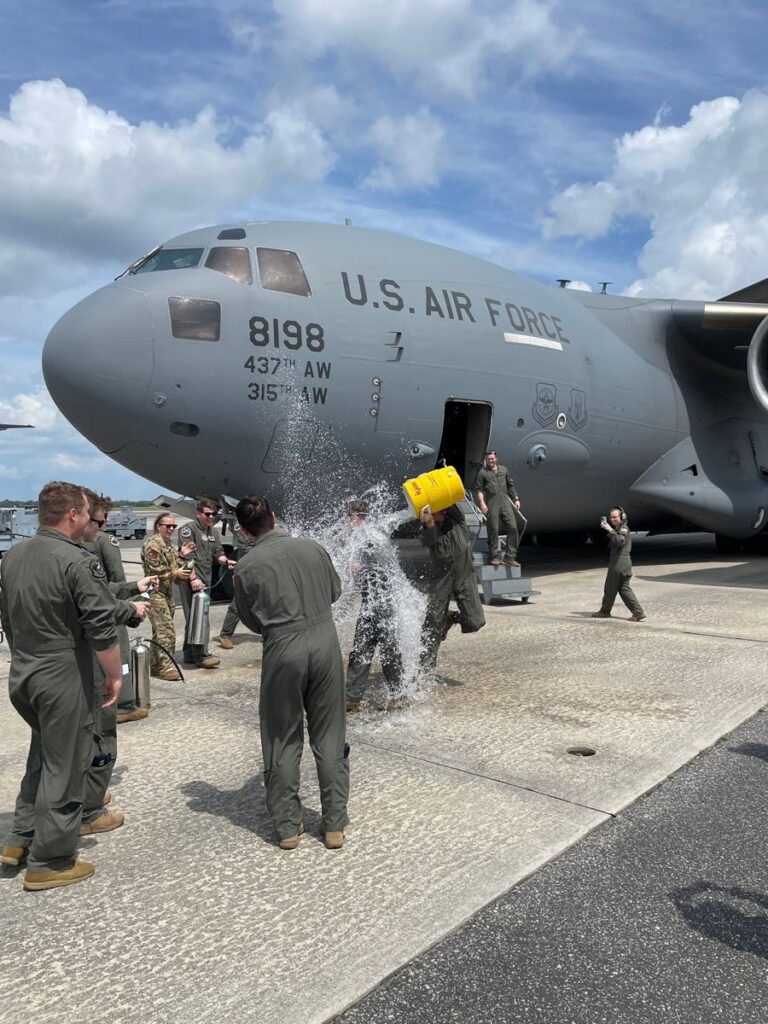
C-17 U.S. Air Force
The Boeing C-17 Globemaster III is one of the most important aircraft in the United States Air Force, known for its power, versatility, and reliability. Designed for both strategic and tactical airlift missions, the C-17 has played a central role in American military operations since its introduction in the 1990s. It combines long-range capabilities with the ability to operate in rugged environments, making it a key tool for transporting troops, equipment, and humanitarian supplies across the globe.
The C-17 project began in the 1980s, when the U.S. Air Force needed a modern transport aircraft to replace older models such as the C-141 Starlifter. Boeing (then McDonnell Douglas) was awarded the contract to build the C-17, and the aircraft first flew in 1991. By 1995, it officially entered service. Since then, it has become one of the most trusted workhorses in military aviation.
One of the greatest strengths of the C-17 is its impressive size and load capacity. It is capable of carrying up to 170,900 pounds of cargo, including tanks, armored vehicles, helicopters, and large amounts of supplies. Despite its heavy load capacity, the aircraft is also capable of short takeoffs and landings on unpaved or damaged runways, which allows it to deliver critical equipment to areas that other planes cannot reach. This ability has proven essential in both combat zones and disaster relief missions.

The aircraft is powered by four Pratt & Whitney F117-PW-100 turbofan engines, each delivering more than 40,000 pounds of thrust. This gives the C-17 a range of over 2,400 nautical miles with a full payload, and much farther when carrying lighter loads or refueled midair. In addition to its range, the C-17 has advanced avionics and a modern cockpit, which allows pilots to handle challenging missions with precision and safety.
Beyond combat operations, the C-17 has often been a symbol of American humanitarian assistance. The aircraft has been used to deliver food, water, and medical supplies to disaster-stricken regions around the world, from earthquake zones to areas affected by tsunamis and hurricanes. Its ability to quickly move large amounts of aid has saved countless lives and demonstrated the aircraft’s role beyond warfare.
During major U.S. military campaigns such as operations in Iraq and Afghanistan, the C-17 was indispensable. It moved troops, heavy vehicles, and supplies into combat areas while also evacuating wounded soldiers and civilians. Its reliability and ability to land in hostile environments made it a vital part of U.S. strategy.

Today, the C-17 remains in active service with the U.S. Air Force, and it is also operated by several allied nations, including the United Kingdom, Canada, Australia, and India. Although production officially ended in 2015, the fleet is expected to continue operating for decades, thanks to its durability and ongoing upgrades.
In summary, the C-17 Globemaster III is more than just a cargo plane—it is a symbol of American power, reach, and readiness. Whether delivering troops to a battlefield or humanitarian aid to disaster victims, the aircraft represents the versatility and global presence of the U.S. Air Force.




